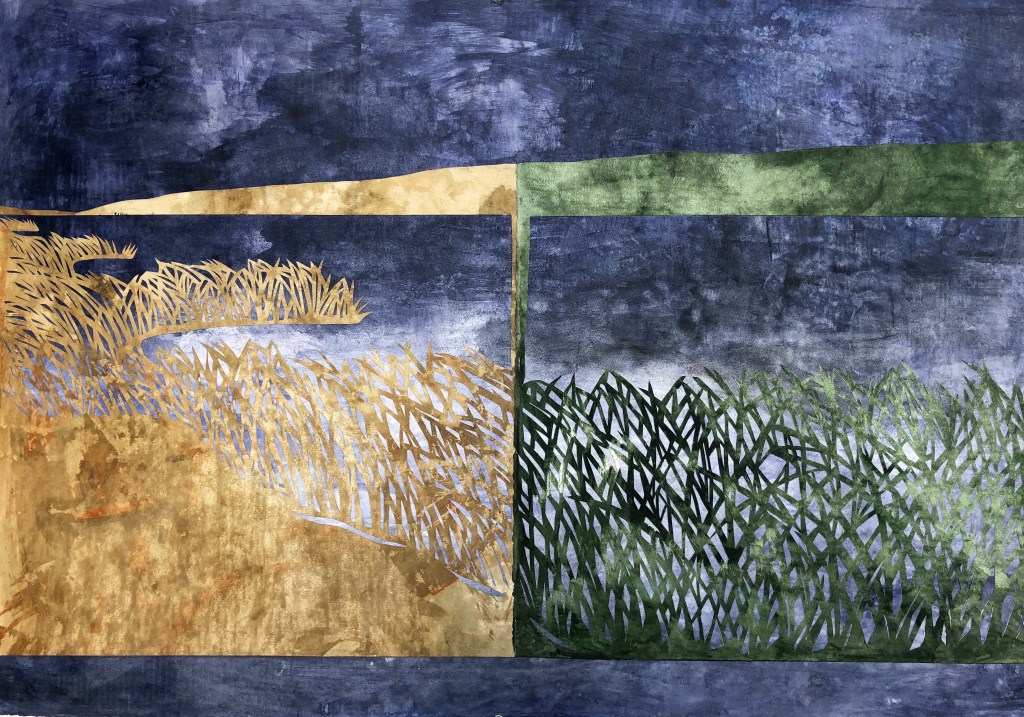
Mondrian’s Flowers
“Yes, I might still have a few,” Mondrian would say,
when that’s all a collector wanted— one
of his old paintings or drawings of flowers. And
sometimes he would paint one and let it dry for
a while.
They did not even want to look at his new work.
20th century monk
High Priest of Art
The Legendary Master—
in his bare immaculate altar of a studio
in the heart of New York City—
trying to manage to survive, after
finally getting out of Europe alive in
the middle of WWII. His friends
did what they could to help.
A few neighbors often left food for him at his door—
he looked so gaunt and frail. Always properly
dressed, in his dark suit with a white shirt and tie.
Ascetic and reserved, in a higher abstract world—
though he did also go dancing several times a week
at Roseland, and to jazz clubs— and
watched the lights on Broadway: Red Yellow Blue
primary colors. Boogie-Woogie…Trafalgar
Square…New York III… Paintings he couldn’t
sell.
And so, he resorted to his flowers on
whatever canvas or paper was available. Pale
pastel poignant apparitions— the fragrance
of such sadness in their wake: otherworldly
chrysanthemums, amaryllises; gray, beginning
to wilt, autumn sunflowers; bright festive
striped feather tulips and pure saintly
white roses.
It was another cold
winter.
Two of his friends found him
in his unheated studio, passed out on the floor,
in front of his composition wall of color planes
and got him to the closest hospital. On the
death certificate: pneumonia.
He’d been working on a new painting,
Victory Boogie-Woogie.
He knew it was just a question of time— his
new work would soon be seen the way it should be.
In the meantime, he could always sell his flowers.
✶✶✶✶
 Over the years, Deborah Elliott Deutschman has poems and stories in Alaska Quarterly Review, American Writing, The Carolina Quarterly, Gargoyle Magazine, The New Criterion, New York Quarterly, and The New Yorker, as well as a novel, Signals, published by Seaview Books/Simon & Schuster, and PEI Books, Inc. She’s also written feature-length screenplays and film adaptations, on her own and in collaboration, including with the filmmaker Chantal Akerman. Most recently, Deutschman just finished a science fiction novel that she’s been working on for quite a long time—and a collection of poems, of which “Mondrian’s Flowers” is part.
Over the years, Deborah Elliott Deutschman has poems and stories in Alaska Quarterly Review, American Writing, The Carolina Quarterly, Gargoyle Magazine, The New Criterion, New York Quarterly, and The New Yorker, as well as a novel, Signals, published by Seaview Books/Simon & Schuster, and PEI Books, Inc. She’s also written feature-length screenplays and film adaptations, on her own and in collaboration, including with the filmmaker Chantal Akerman. Most recently, Deutschman just finished a science fiction novel that she’s been working on for quite a long time—and a collection of poems, of which “Mondrian’s Flowers” is part.
✶
 Cynthia Weiss is studio artist, public artist, and arts educator. She has directed public mosaic projects throughout Chicago transforming neglected spaces into local landmarks. She has exhibited at the Hyde Park Art Center, Uptown Art Center, Ukrainian Institute of Modern Art, and Woman Made Gallery, among other spaces. Cynthia facilitates workshops in the arts and literacy, including with Habla: The Center for Language and Culture, in Merida, Mexico. She has been a Ragdale artist fellow and holds an MFA in Painting from the University of Illinois at Chicago. She is a member of the Chicago Public Art Group. In her paintings, collages, and cut paper installations, Cynthia explores themes of ecosystems at risk, and the need for sanctuary in the human and natural world.
Cynthia Weiss is studio artist, public artist, and arts educator. She has directed public mosaic projects throughout Chicago transforming neglected spaces into local landmarks. She has exhibited at the Hyde Park Art Center, Uptown Art Center, Ukrainian Institute of Modern Art, and Woman Made Gallery, among other spaces. Cynthia facilitates workshops in the arts and literacy, including with Habla: The Center for Language and Culture, in Merida, Mexico. She has been a Ragdale artist fellow and holds an MFA in Painting from the University of Illinois at Chicago. She is a member of the Chicago Public Art Group. In her paintings, collages, and cut paper installations, Cynthia explores themes of ecosystems at risk, and the need for sanctuary in the human and natural world.